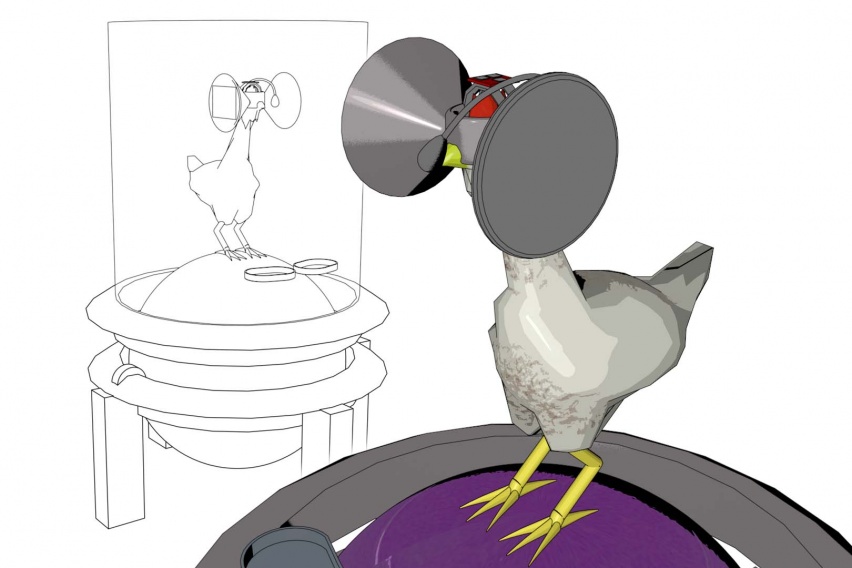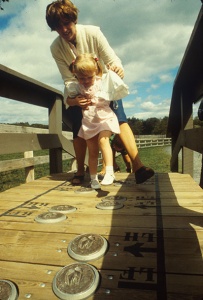On Second Livestock
Posted June 3, 2014

Second Livestock — get it, from Second Life — is an interesting idea from Austin Stewart, an assistant professor at Iowa State University. The basic premise of the project is to expand a chicken’s “idea” and experience of being free range by putting a virtual reality helmet on the animal in a farm setting, thus engaging in the ethical debate about factory farming by expanding the poultry’s conscious.
The popular presses are looking at the project as a kooky way of putting a virtual reality headset on an animal and seeing what happens. The article published on wired.com led with the lines, “What problem doesn’t technology solve these days? You want a pizza instantly? You can print one. Not enough room for your chickens to roam and live a happy free-range life? Just strap Oculus Rift virtual reality headsets on them and make them think they’re running in an open field.”
But that is not what Austin — may we call you Austin? — set out to prove at all. There wasn’t really a problem to solve, but more of a moral quandary that was present to be approached. Austin writes on his own website — theaustinstewart.com — “Second Livestock is a virtual reality world for conventionally farmed chickens. Under the guise of providing a solution to maintain the profitability of conventional chicken farming while allowing the chickens to be “free range,” Second Livestock engages the ethical debates of contemporary animal husbandry and humanity’s increasing immersion into virtual worlds. The audience experiences the work as a PowerPoint presentation and live demonstration of the CCI (Chicken-Computer Interface).”
Second livestock, for this artist, is an attempt to juxtapose two fascinations that our society has, to give them a realm to overlap in, and in doing so, exposes some elements of both systems that may have been overlooked. Today, we seem to be obsessed with factory farming and the potential of virtual reality at the same time.

Why is this relevant to ESI? Well, because back in 1982, at the early days of the company, we completed a project that is almost a correlative of Second Livestock. Macomber Farm was a Massachusetts Society for the Prevention of Cruelty to Animals property that was lacking in experience. They asked our founder, Edwin Schlossberg to design a way to make the experience of animals more real to people. The purpose was to engender empathy and understanding for how animals experience the world.
The design featured 68 interactive activities that put visitors into the bodies and the physical and sensory experiences of farm animals. Visitors to the farm could step like a horse, they could hear like goats, they could make their way through a scent maze, and — as a harbinger for the Oculus Rift to come — they could put their face into a helmet and see like a sheep or, wait for it, a chicken.
What the two projects have in common, separated as they are by decades, is the common task of creating a virtual experience that opens the user’s mind to the way in which another species’ experiences the world. It is very exciting to see an artist working in this realm, developing technology and experiences that continue a basic principle of this design firm: experience creates knowledge that can influence change.


Join The Conversation